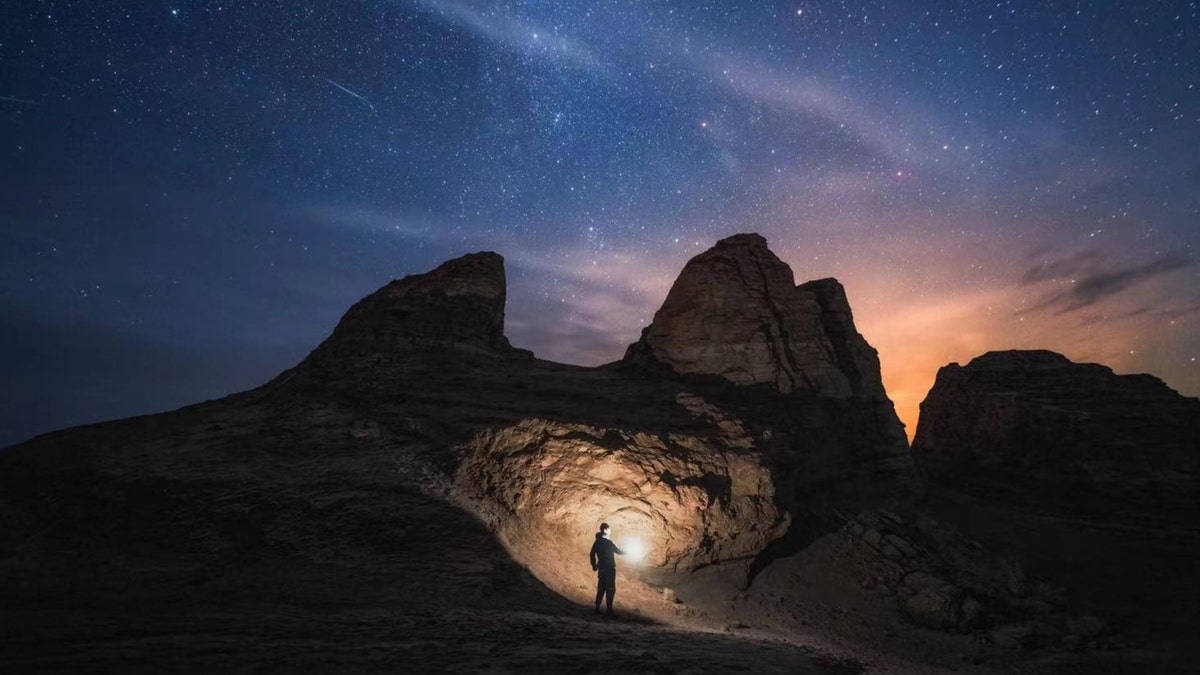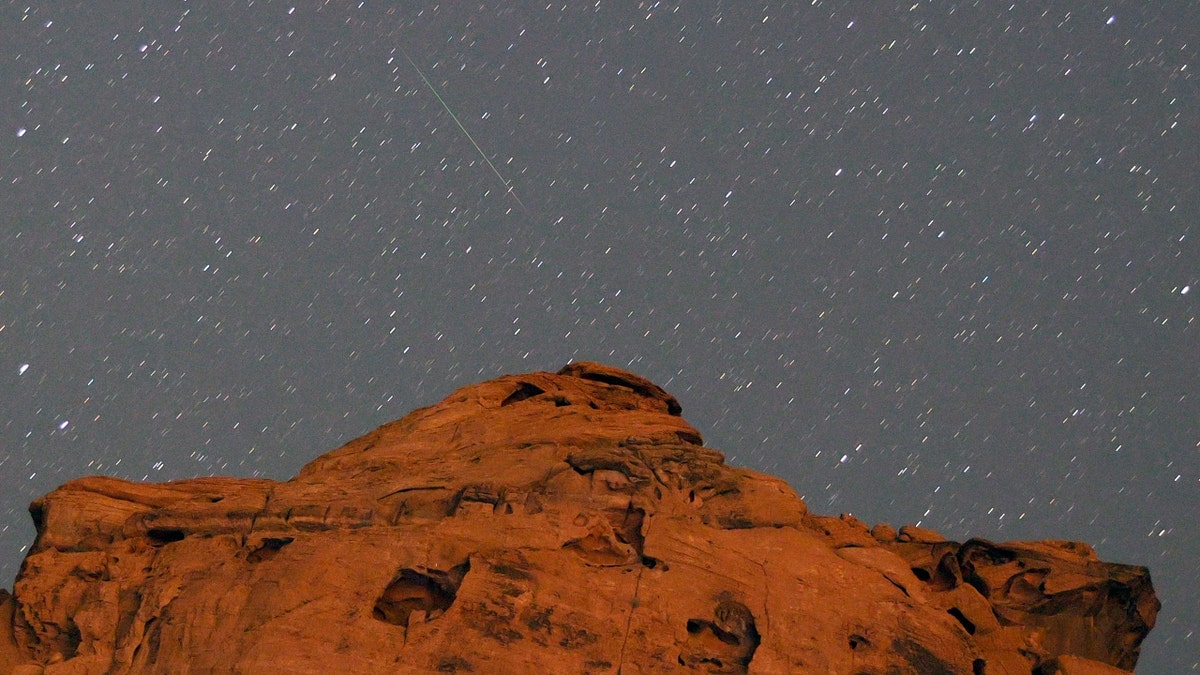'Small swarm of meteors' seen in the skies over Goodland, Kansas
The National Weather Service's Goodland office captured video of meteors lighting up the night sky on Sunday.
The dazzling Perseid meteor shower – one of the biggest meteor showers of the year – is back from July through late August.
The shower is forecast to peak from August 12 to 13, when the moon will be 10% full, according to the American Meteor Society.
The society notes that normal rates seen from rural locations range from 50 to 75 shower members per hour at maximum.
The Perseids occur when Earth crosses through the stream of debris of the comet 109P/Swift-Tuttle and its meteors – most of which are pea-sized – create bright "shooting stars" as they burn up in the planet's atmosphere.

A meteor streaks across the sky over the Alabama Hills, near the eastern Sierras, during the annual Perseid meteor shower on August 20, 2022, near Lone Pine, California. The celestial event is seen each year from mid-July to late August. (Photo by David McNew/Getty Images)
The meteors appear to radiate from the constellation Perseus, or the shower's "radiant," but can be seen streaking across the sky anywhere at a speed of 37 miles per second.
The shower is also known for its fireballs, which can last longer than an average meteor streak.
AUGUST FEATURES 2 SUPERMOONS, INCLUDING A BLUE MOON: WHAT TO KNOW

The Perseid meteor shower illuminates the night sky over the Eboliang Yardang landform on August 12, 2022, in Haixi Mongolian and Tibetan Autonomous Prefecture, Qinghai Province of China. ((Photo by Wu Zhengjie/VCG via Getty Images))
Swift-Tuttle orbits between the sun and beyond the orbit of Pluto once every 133 years.
Every year, the Earth passes near the path of the comet.

A Perseid meteor streaks above a sandstone outcropping at Redstone in the Pinto Valley wilderness area on August 12, 2021, in the Lake Mead National Recreation Area, Nevada. ((Photo by Ethan Miller/Getty Images))
CLICK HERE TO GET THE FOX NEWS APP
The comet itself won't be visible to Earth again until 2125.
NASA says there is no chance the planet will soon run into the comet.


